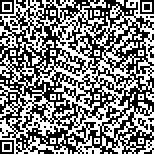| 摘要: |
| 通过对2011—2013年夏季南黄海大型底栖软体动物的群落结构进行分析,揭示其与黄海冷水团之间的关系。使用Shannon-Wiener指数(H')、Pielou指数(J')、Margalef指数(D)和ABC(Abundance Biomass Comparison)曲线法分析群落多样性和稳定性。使用PRIMER6.0对大型底栖软体动物群落进行Cluster和MDS相似性分析。通过单因素方差分析(ANOVA)检验各指数之间的差异性。结果表明,三个航次共获得大型底栖软体动物36种,日本梯形蛤(Portlandia japonica)与薄索足蛤(Thyasira tokunagai)在三年中均为优势种。大型底栖软体动物平均丰度分别为27.250±22.15、31.765±27.948和30.476±30.818 ind./m2;平均生物量分别为8.164±9.145、6.942±7.139和5.071±10.015 g/m2。研究结果显示3年来黄海冷水团内大型底栖软体动物的多样性高于冷水团外大型底栖软体动物多样性,丰度分布由北到南逐渐增加且冷水团内的丰度大于冷水团外的丰度。南黄海海域大型底栖软体生物群落结构稳定,与2006年相比没有较大的变化。 |
| 关键词: 南黄海 黄海冷水团 大型底栖生物 软体动物群落 夏季 |
| DOI:10.11693/hyhz20160300043 |
| 分类号: |
| 基金项目:中国科学院战略先导专项项目,XDA11020303号;国家海洋局海洋行业公益项目,201505004号;国家自然科学基金项目,41176133号。 |
|
| MOLLUSC COMMUNITY OF SOUTH YELLOW SEA IN SUMMER |
|
ZHANG Peng-Chi1, XU Yong2, LI Xin-Zheng2, WANG Hong-Fa2, AN Jian-Mei1, ZHANG Bao-Lin2, SHUAI Lian-Mei2
|
|
1.School of Life Science, Shanxi Normal University, Linfen 041000, China;2.Department of Marine Organism Taxonomy and Phylogeny, Institute of Oceanology, Chinese Academy of Sciences, Qingdao 266071, China
|
| Abstract: |
| Macrobenthic samples were collected in South Yellow Sea in summer 2011, 2012, and 2013, on which the community characteristics of mollusc were studied, and the relationship between the mollusc community and the Yellow Sea Cold Water Mass (YSCWM) was discussed. Shannon-Wiener index, Pielou index, Margalef index, abundance, and biomass were calculated to describe the community. Cluster analysis and MDS (nonmetric multidimensional scaling) ordination were performed using Primer 6.0. In total, 36 molluscs species were recorded, of which Portlandia japonica and Thyasira tokunagai were dominant species. The average abundance in 2011, 2012, 2013 was 27.250, 31.765, and 30.476 ind./m2 respectively, and the average biomass was 8.164, 6.942, and 5.071 g/m2 respectively. The abundance of molluscs decreased from north to south; higher in YSCWM lower beyond it. Therefore, the mollusc community structure in South Yellow Sea is relatively stable since 2006. |
| Key words: South Yellow Sea Yellow Sea Cold Water Mass macrobenthos mollusc community summer |
